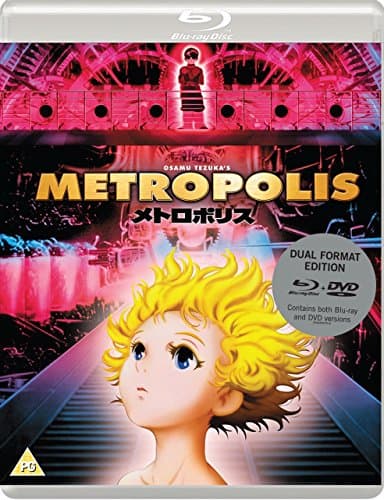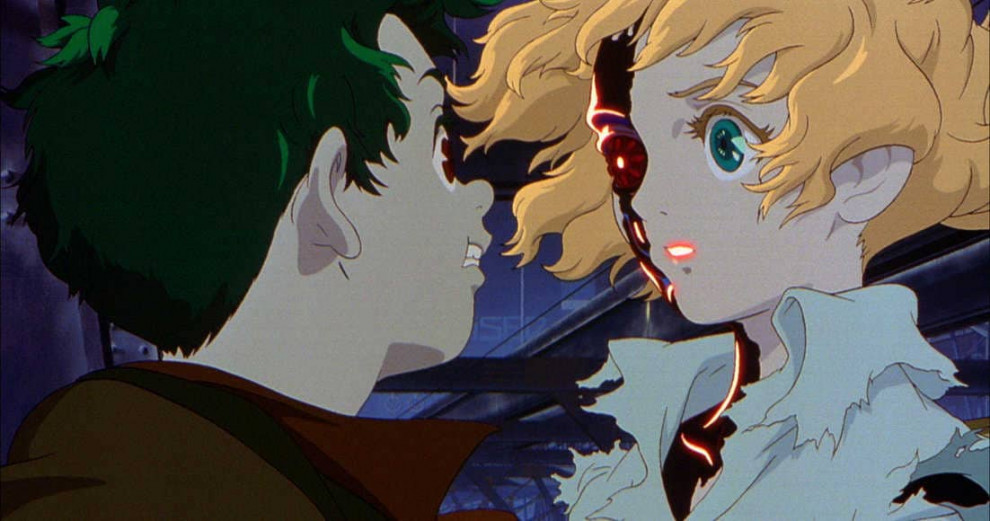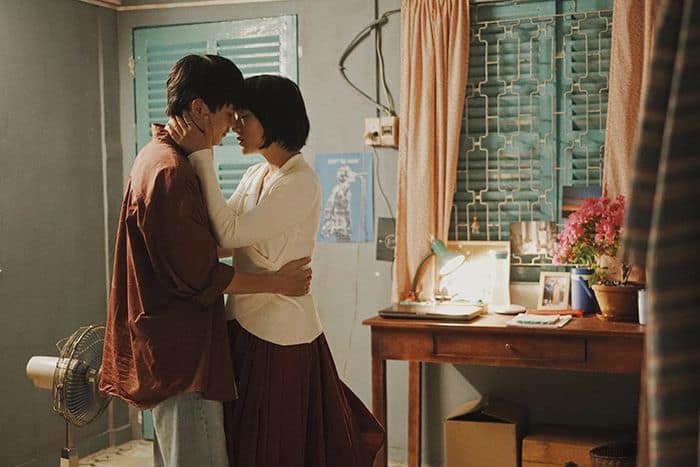Based on the classic manga by Osamu Tezuka, itself inspired by the homonymous, 1927 German silent film by Fritz Lang, and featuring a script by the anime legend Katsuhiro Otomo (Akira), direction by Tezuka's collaborator, Rintaro (Astro Boy), and animation by Madhouse, “Metropolis” had all the tools for becoming a masterpiece. In that fashion, it succeeded to the fullest, taking advantage of its huge budget ($15 million) in the best way possible.
Buy This Title

Metropolis is an industrial, tri-level city, where robots and humans co-exist, although the former are discriminated (they cannot even have a human name, resorting in codes to name themselves) and segregated to the lower levels. Duke Red is a paramilitary leader with ties to the government and a plan to create the most perfect robot of all, in the image of his deceased daughter, Tima. Furthermore, he has just erected a massive skyscraper called the Ziggurat, which he claims will allow humanity to extend its power across the planet. In order to achieve his first goal, he has hired Dr Laughton, a shady scientist who is wanted for organ trafficking.
Japanese private detective Shunsaku Ban and his nephew Kenichi travel to Metropolis to arrest Dr. Laughton, but after an explosion in his lab, caused by Duke Red's adopted son, Rock, who is jealous of Tima, the two are separated, and Kenichi ends up with Tima. Rock is also the leader of Marduk, a vigilante group whose supposed purpose is to calm anti-robot sentiments. Rock continues to hunt Tima and Kenichi, who are forced to seek refuge in the lower levels of the city, where they meet Atlas and his group of unemployed workers who are plotting to have a revolution. However, when this revolution breaks out, everyone seems to want to use it for his own purpose.

Rintaro directs an intricate anime, which uses the plethora of its main characters to present a number of sociopolitical allegories and metaphors. The most obvious one regards the way the government uses the military power of the right wing groups for its purposes, but eventually this group (in this case Duke Red and the Marduk) takes power in its hands, overthrowing the legitimate government and establishing a dictatorship. The fact that the labor force is also misguided into revolting and eventually betrayed is another metaphor of the way governments occasionally use the proletariat. Both of the aforementioned concepts have a distinct connection to the events that unfolded in Weimar Germany, who witnessed the horrors and the aftermath of the First World War, only to plunge again into a political chaos that eventually brought Hitler and the Nazis to the fore. Issues of racism and discrimination are also included and represented by the concept and the situation of the robots.
Otomo has done a great job on the characters, with Shunsaku, Rock and Tima standing apart. The first one is a seemingly honest, but somewhat weak and naive individual. However, as the story progresses, he is revealed to be a great detective, not to mention quite strong. Tima and Rock are opposites, on the axis of identity. Tima tries to understand if she is a robot, in order to ascertain her identity, and Rock has persuaded himself that the only thing that defines him is his relationship with Duke Red. In his effort to retain it as he perceives it (despite Duke Red's opinion on the matter, which he repeats to him quite eloquently), he becomes a sociopath, determined to stop at nothing, in order to prevent any change upon it. Both of them, however, have attached themselves to someone else in order to give purpose to their lives, Tima to Kenichi and Rock to Duke Red.
Technically, the film exceptional. The visual prowess is a combination of hand-drawn animation, consisting of 150.000 cels, and digital graphics, that took five years to complete and to achieve a level of artistry that becomes evident from the first frame. As movement is everywhere, both in the background and the foreground, each image in the anime is magnificent, highlighting the hard work and the expertise of Madhouse crew, as much as the inspiration of Rintaro. The initial scene, the one with the firefighters and the whole of the ending sequence are the ones that definitely stand out, although there is none that is singificantly flawed.
Another great aspect of “Metropolis” is its soundtrack, which mainly consists of New Orleans-style jazz music and orchestral score composed by Toshiyuki Honda and features Atsuki Kimura's cover of “St. James Infirmary Blues” and the ending theme “There'll Never Be Good-Bye” by Minako “Mooki” Obata. All of the tracks are wonderfully implemented in the film, highlighting the purpose and the feeling Rintaro wanted to give to each scene. This trait reaches its apogee in the ending sequence, where “I Can't Stop Loving You” performed by Ray Charles accompanies a scene of mass destruction, in probably the most memorable scene of the whole movie. The technical aspect benefits the most from Eureka Entertainment's presentation in Blu-Ray, that highlights both the visual and the audio aspects of the film.
“Metropolis” is a true masterpiece, a must-watch for every fan of anime, and cinema in general.















